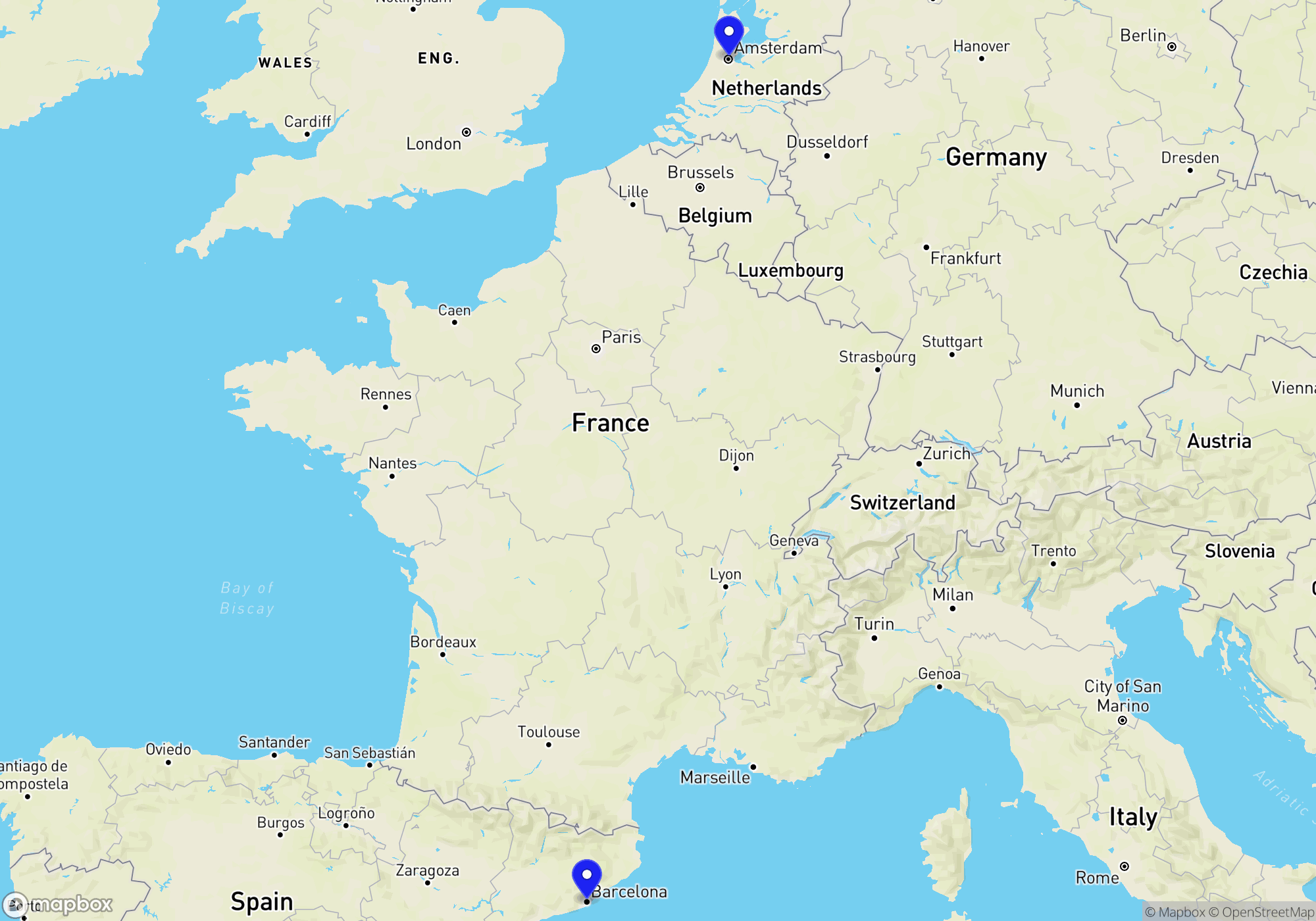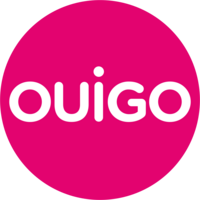
You can buy train tickets directly from the operator or through a reseller. The reseller is typically slightly more expensive (3-5%) but can provide an easier booking experience, especially if you travel with more than one operator.


These operators provide a complete journey either as a direct connection or through their partners. Even if a change of trains is involved, it’s all part of a single itinerary managed by the same train company or its partners, offering a smoother and more coordinated travel experience.
Some operators don’t run direct trains the whole way, but they serve either the departure or arrival station. In many cases, you can combine two of these operators to complete your journey by changing trains along the way. This is often a flexible and budget-friendly way to travel — especially if you’re comfortable piecing together your own itinerary.
Just keep in mind that these are separate journeys, which means a delay on the first leg could cause you to miss the second without automatic compensation or rebooking. It’s a great option for confident travelers who don’t mind a bit of extra planning.


Travelers journeying from Barcelona to Amsterdam can consider two main rail operators: SNCF and Thalys, often associated with comfortable, long-distance train travel in Europe, alongside the possibility of using Flixbus, which primarily offers coach services but partners with train operators for rail connections.
SNCF, the French National Railway Company, operates high-speed trains known as TGVs (Train à Grande Vitesse). These trains are known for their speed and efficiency, offering a comfortable and swift journey across regions. Onboard amenities typically include spacious seating, power outlets, free Wi-Fi, and a café or bar car providing meals and snacks. First-class passengers enjoy more space and an enhanced dining experience. SNCF provides attentive customer support with information desks at major stations and multilingual staff. Online assistance is also readily available through their website and mobile app, offering ticket booking, journey planning, and real-time travel updates.
Thalys, often part of the journey between Paris and Amsterdam, offers high-speed services connecting major European cities. It is renowned for its stylish red trains and premium service. Thalys trains provide several comfort levels, including Standard, Comfort, and Premium classes. Passengers can expect spacious seating, complimentary Wi-Fi, and individual power outlets. The Premium class offers at-seat food service, lounge access, and increased flexibility with tickets. Thalys also delivers robust customer support, with multilingual staff both online and onboard, efficient booking services via their app, and a dedicated helpline for any inquiries.
Flixbus primarily serves as a coach service, but partners with rail operators to offer seamless connections for long-distance travels, including rail journey segments. Known for cost-effective travel, Flixbus provides basic amenities on its buses, such as free Wi-Fi, comfortable seating, and power outlets. While not a direct rail operator, Flixbus enables ticket purchases that include train services operated by partners, facilitating a mix of rail and coach travel for comprehensive route coverage.
For first-time travelers, understanding these options means acknowledging that the journey from Barcelona to Amsterdam typically involves multiple legs, possibly combining services from these operators for an efficient and flexible travel experience. Checking current schedules and ticket availability through their respective websites or customer service channels is advisable to optimize travel plans.
The Interrail Global Pass is valid for traveling by train from Barcelona to Amsterdam, as it covers multiple countries in Europe, including Spain, France, and the Netherlands. The Interrail One Country Pass would not be suitable for this journey, as it is only valid for travel within one specific country. The Eurail Global Pass is also valid for this route, as it caters to non-EU residents traveling across multiple European countries.
Upon arriving in Amsterdam by train, you will likely disembark at Amsterdam Centraal Station, the city’s main transportation hub. From here, you have several options to get around the city using local transportation. The tram system is one of the most convenient and extensive methods, with multiple lines fanning out across the city from the station. You can purchase an OV-chipkaart, which is a rechargeable smart card, or buy single or day passes for travel. The metro system, which also operates with the OV-chipkaart, serves routes further away from the city center, connecting to suburban areas and providing a quick way to cover larger distances. Stops are clearly marked and maps are available at every station. Buses provide another layer of transit, especially useful for routes not covered by trams or metros, and night buses operate when other services pause for the night. Taxis are readily available and can be hailed on the street or found at designated taxi stands throughout the city, including outside major train stations and attractions. Ridesharing services like Uber operate in Amsterdam as well, offering a convenient alternative that can be accessed through a smartphone app, often showing fare estimates and allowing for cashless payment. The city’s transport network is integrated, so transitioning between these different modes is seamless and supported by the use of the OV-chipkaart. Always check the schedules and maps available at stations or online for the most efficient routes.
Amsterdam, as a major rail hub in Europe, offers a variety of domestic and international train connections. Domestically, one of the most popular routes from Amsterdam is to Rotterdam, a journey taking about 40 to 60 minutes on intercity trains. Travelers can also head to The Hague, which takes approximately 50 minutes. Additionally, the journey to Utrecht is a mere 20 to 30 minutes long, making it an excellent connection for commuters and tourists alike.
Internationally, Amsterdam is well-connected by high-speed trains. The Thalys service is a popular option for travelers heading to Belgium and France. It takes just over an hour to reach Brussels, and passengers can continue to Paris, making the journey in about 3 hours and 20 minutes. For travelers going to Germany, the ICE train connects Amsterdam to cities like Cologne in about 2 hours and 40 minutes, with Frankfurt being approximately 4 hours away. Another noteworthy connection is the Eurostar, which began direct services from Amsterdam to London, taking about 4 hours. These connections highlight Amsterdam’s strategic place in Europe’s rail network, offering efficient and comfortable options for both domestic and international travelers.
The best time to visit Amsterdam is generally from late April to early October. Late April to May offers pleasant weather and the added attraction of blooming tulip fields, with April also marking the vibrant celebration of King’s Day around the city. June to early September features warm weather, perfect for exploring outdoor attractions and canals, and hosts various festivals like the Holland Festival and Amsterdam Pride. Prices and tourist numbers tend to peak in July and August, so visiting in late spring or early autumn can provide a more relaxed and affordable experience. September and early October offer cooler but comfortable temperatures, fewer crowds, and cultural highlights such as the Amsterdam Dance Event. Traveling by train around these periods can be a convenient option, as it allows you to enjoy the scenic landscapes without the hassle of peak travel congestion typical of summer.
When traveling from Barcelona to Amsterdam by train, it’s important to pack items that will ensure comfort and preparedness for both the train journey and your time at the destination. Remember to carry your passport or national ID, as these are necessary travel documents within the Schengen Area. Pack a comfortable neck pillow and a lightweight blanket for the long journey, along with noise-canceling headphones or earplugs to help you rest. Bring snacks and a refillable water bottle to stay hydrated, although you can purchase food and drinks on the train. Consider carrying a power bank to keep your devices charged, as well as a European plug adapter; both Spain and the Netherlands use Type C and Type F outlets with a voltage of 230V, so the adapter should suit both countries. Don’t forget a raincoat or umbrella and a universal travel guide or map of Amsterdam, especially if you plan to explore. Finally, pack a reusable tote for shopping or carrying items while sightseeing, and make sure to have any required medications or personal care items readily accessible.
Some content on this website is created with the assistance of generative AI. To ensure factual accuracy, all information is reviewed by an expert in European train travel. However, despite careful verification, occasional errors or updates may not be immediately reflected. © 2025 Green Company. All rights reserved.